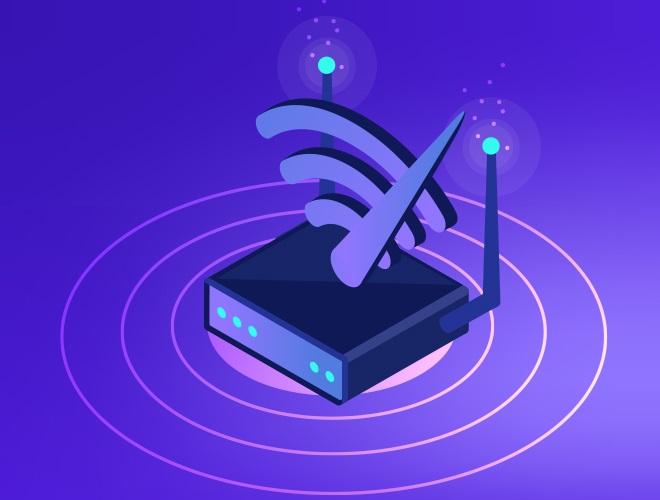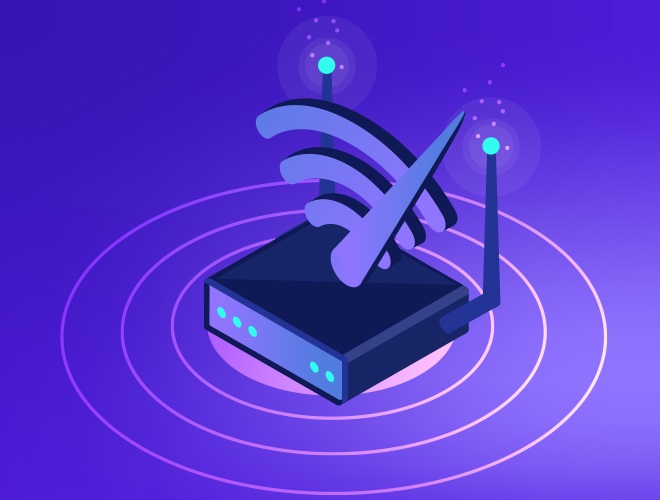In today's interconnected world, networking is an essential part of our daily lives. Whether it is the internet, intranet, or LAN/WAN, networking plays a crucial role in enabling communication and data exchange between different devices.
It's crucial to comprehend the distinctions between Local Area Network (LAN) and Wide Area Network (WAN) while setting up a network. WANs link devices that are dispersed across a broad region, such as an entire nation, as opposed to LANs, which connect devices inside a small area, such as an office. To decide which kind of wireless router is ideal for your network, it is crucial to understand how the two vary.
The words LAN and WAN are frequently seen next to some of the router's ports. A LAN connection is ideal option if the router is being installed inside an office. On the other hand, a WAN connection might be preferable if the router is tying together a vast network of PCs. Even though they are in separate locations, numerous networks can be connected together via wireless routers. Networks that are dispersed across long distances can be connected by combining LAN and WAN connections. When putting up a big or complex network, this may be really helpful.
In this article, we will explore the characteristics and differences between LAN and WAN. By exploring the characteristics and differences between LAN and WAN in this article, readers can gain a deeper understanding of these two types of computer networks and make well-versed decisions about which one is may be ideal for their specific needs.
Understanding WAN and LAN
WAN stands for Wide Area Network, which refers to a network that spans a larger geographic area, such as a city, state, country, or even the entire world. WANs are typically used to connect devices across different locations, such as branch offices of a company or different cities in a country. WANs often use public networks, such as the internet, to connect the devices, and they are usually operated by telecom companies, ISPs, or government agencies.
On the other hand, LAN stands for Local Area Network, which refers to a network of devices that are interconnected within a limited geographic area, typically within a single building or campus. LANs are usually privately owned and operated by organizations, schools, or businesses, and are used to share resources such as printers, files, and internet connections among the devices connected to the network.
Advantages of WAN
-
WANs can connect remote locations, such as offices in different cities or even countries, enabling seamless communication and collaboration between them.
-
WANs allow for the sharing of resources, such as printers, servers, and internet connections, across the network.
-
WANs provide flexibility and scalability, as they can be easily expanded to accommodate additional locations or users.
-
WANs can improve disaster recovery measures by enabling remote data backups and access to significant applications and data in the event of a potential local outage or disaster.
Characteristics of WAN
-
WANs typically use public telecommunications infrastructure, such as phone lines, satellite links, and fiber optic cables, to transmit data over long distances.
-
WANs often use advanced networking technologies, such as Virtual Private Networks (VPNs), to provide secure communication between different locations.
-
WANs can be slower than Local Area Networks (LANs) due to the longer distances data has to travel, and the potential for congestion on the public infrastructure.
-
WANs require specialized hardware and software, such as routers and switches, to manage the flow of data across the network.
Advantages of LAN
-
LANs provide high-speed data transfer rates, making them ideal for sharing large files, accessing networked resources, and running applications that require fast data transmission.
-
LANs enable users to share resources, such as printers, scanners, and storage devices, reducing costs and increasing efficiency.
-
LANs provide a high level of security by allowing administrators to control access to the network and its resources.
Characteristics of LAN
-
LANs typically use wired or wireless connections to connect devices within a small geographic area, such as Ethernet or Wi-Fi.
-
LANs are often managed by a dedicated server, which stores data and manages access to network resources.
-
LANs are generally faster and more reliable than Wide Area Networks (WANs) because they use dedicated, local infrastructure.
-
LANs can be easily expanded or reconfigured to accommodate changes in network requirements, such as adding or removing devices or users.
Key Differences between LAN and WAN
Size and scope
LANs are typically confined to a small geographic area, such as a single building, campus, or office floor. WANs, on the other hand, cover a much larger geographic area, such as a city, region, country, or even the entire world.
Data transfer rates
LANs provide high-speed data transfer rates, typically in the range of gigabits per second (Gbps), making them ideal for transferring large amounts of data quickly and efficiently. WANs, however, have lower data transfer rates than LANs due to the longer distances data has to travel and the potential for congestion on public infrastructure, typically in the range of megabits per second (Mbps).
Infrastructure
LANs use dedicated infrastructure, such as Ethernet or Wi-Fi, to connect devices within a small geographic area. WANs, however, use public infrastructure, such as phone lines, satellite links, and fiber optic cables, to transmit data over long distances.
Security
LANs provide a high level of security, allowing administrators to control access to the network and its resources. WANs, on the other hand, can be more vulnerable to security threats due to the use of public infrastructure and the potential for unauthorized access to the network.
Management
LANs are typically managed by a dedicated server, which stores data and manages access to network resources. That being said, WANs require specialized hardware and software, such as routers and switches, to manage the flow of data across the network.
To Wrap Up
WAN and LAN are two different types of computer networks with distinct characteristics and functionalities. While LANs are designed for small-scale networks within a limited geographical area, WANs are designed for larger-scale networks that span across multiple locations and cover a wider geographical area. LANs offer faster speeds, higher security, and greater control, while WANs provide greater flexibility, scalability, and accessibility.
Choosing the right type of network for your organization depends on your specific needs and requirements. It is important to evaluate the benefits and limitations of each type of network and choose the one that best suits your organization's goals and objectives. By understanding the differences between WAN and LAN, you can make an informed decision and ensure that your organization's network infrastructure is optimized for success.
Popular Searches
Role of Leased Line Connections | SD Wan Technology | What is WAN | SD-WAN vs MPLS | SD WAN Modernize Your Business | Internet Leased Line Connection | 7 Advantages of Leased line for small Business
















